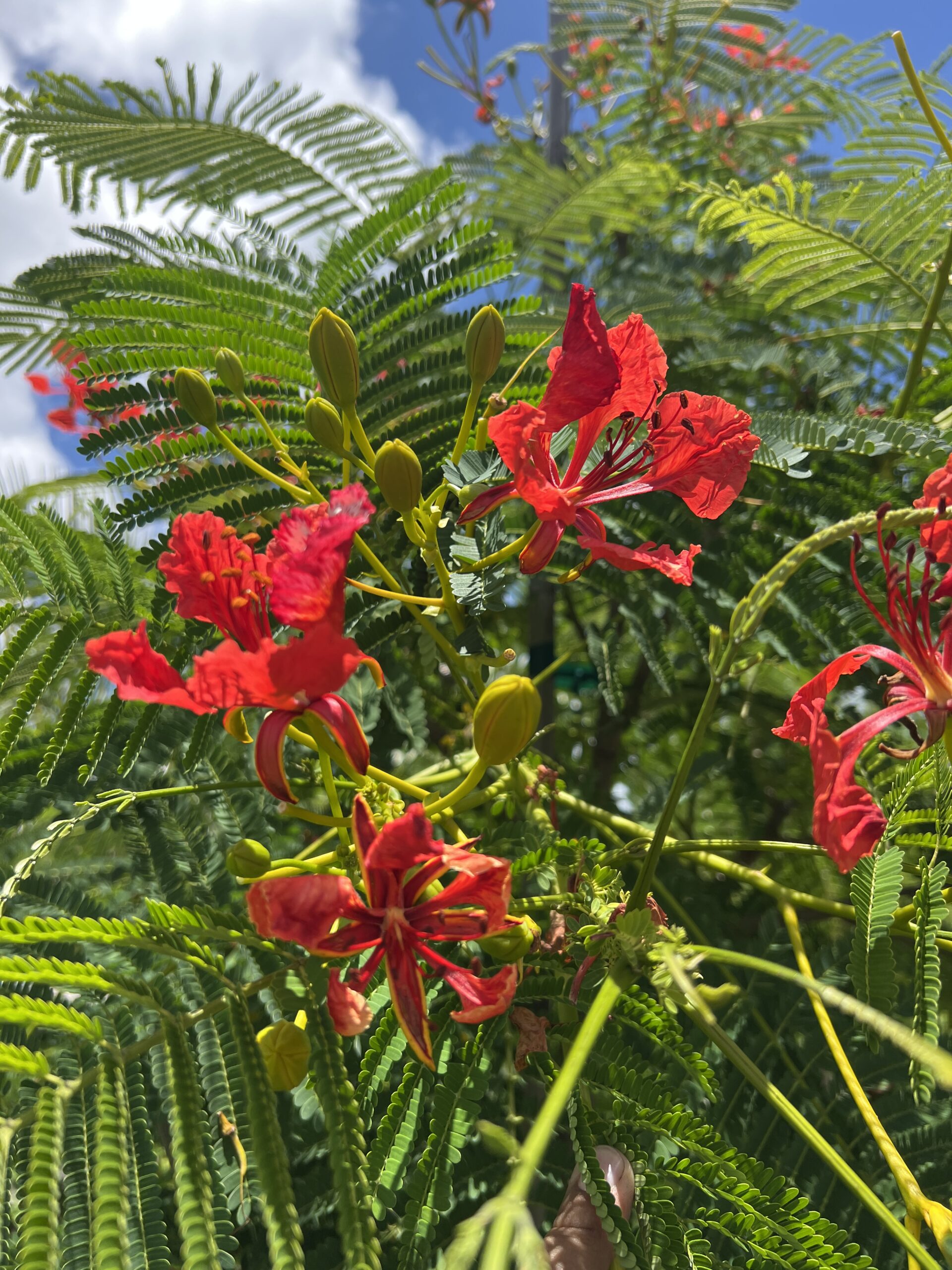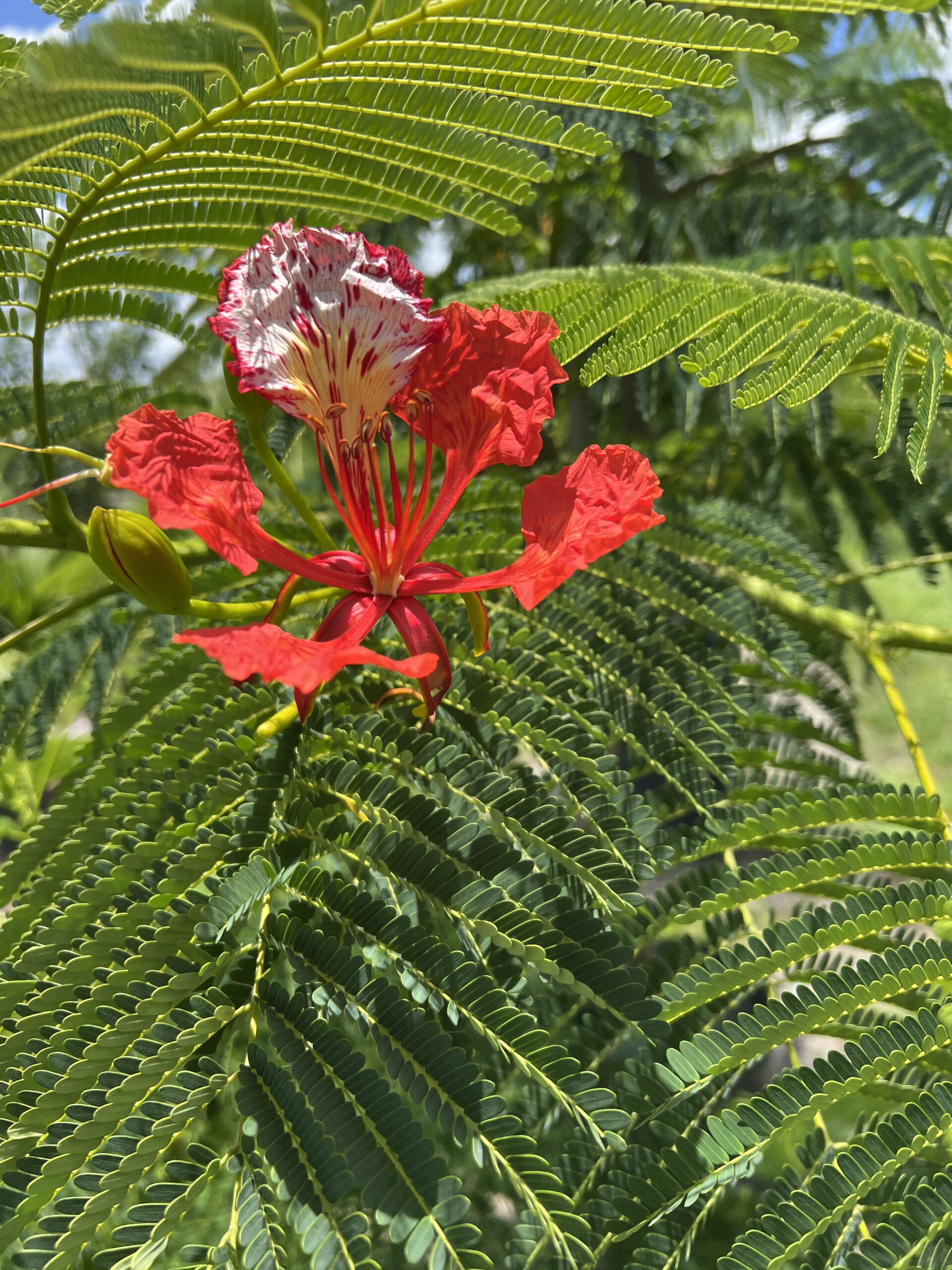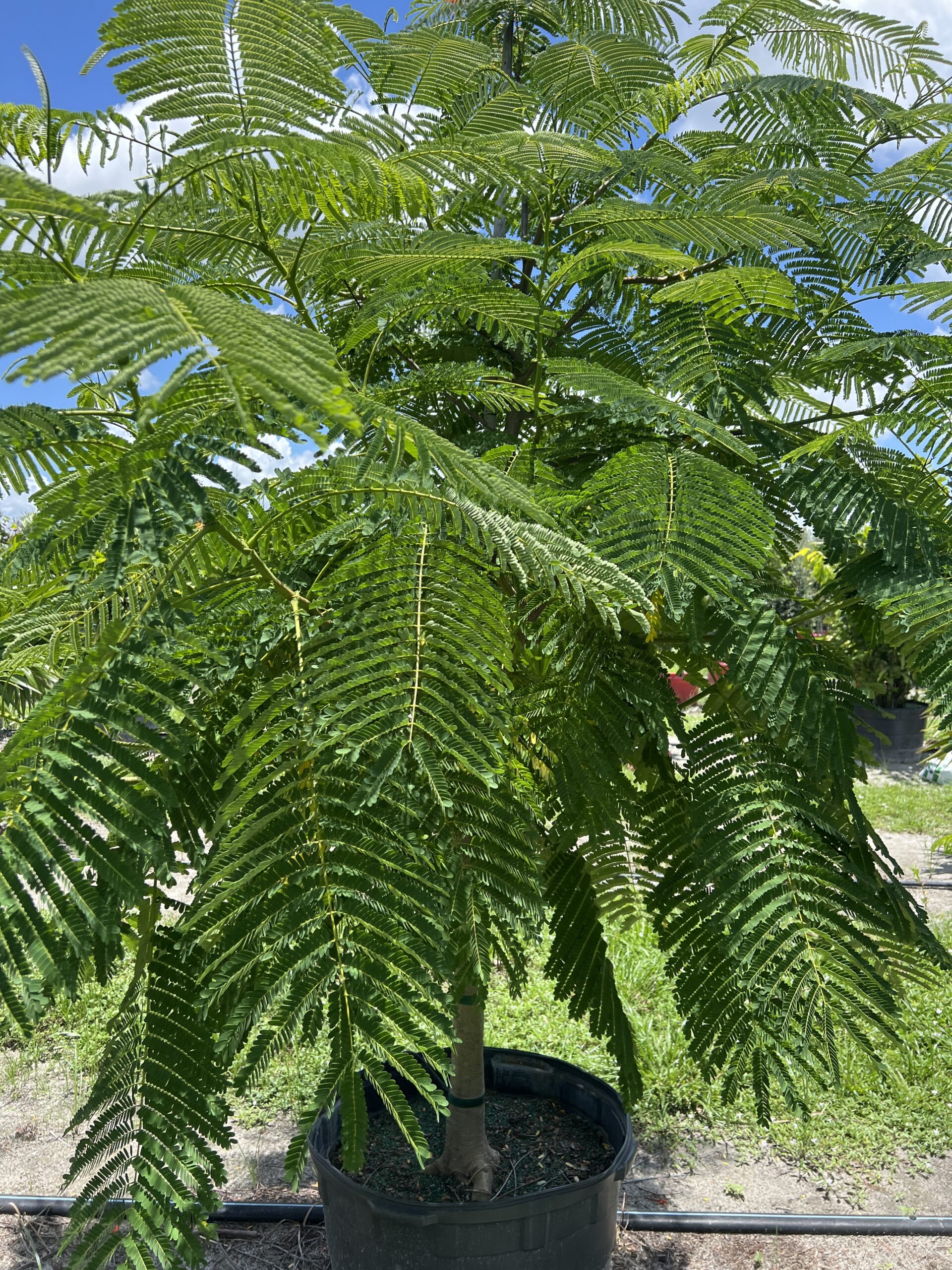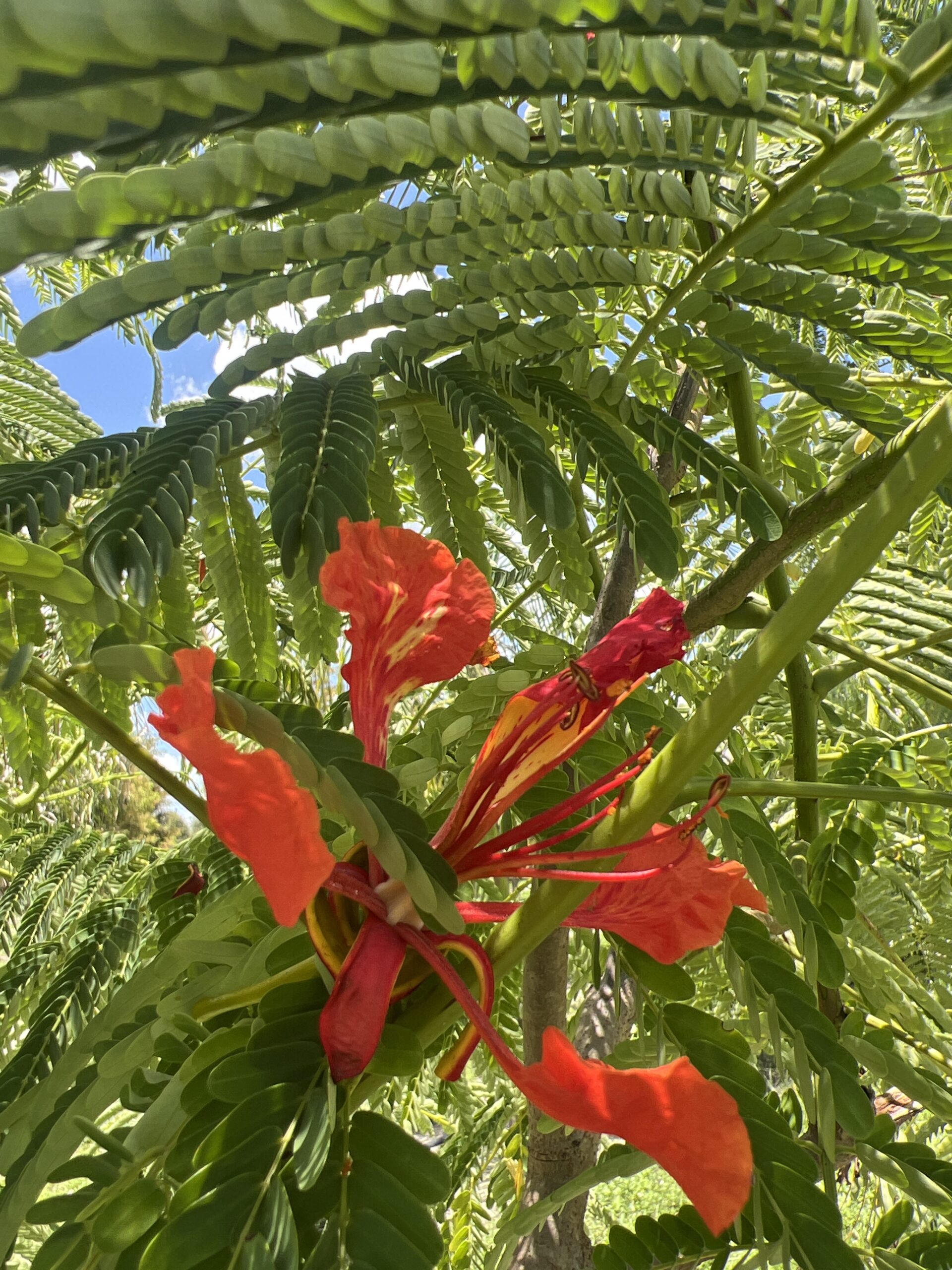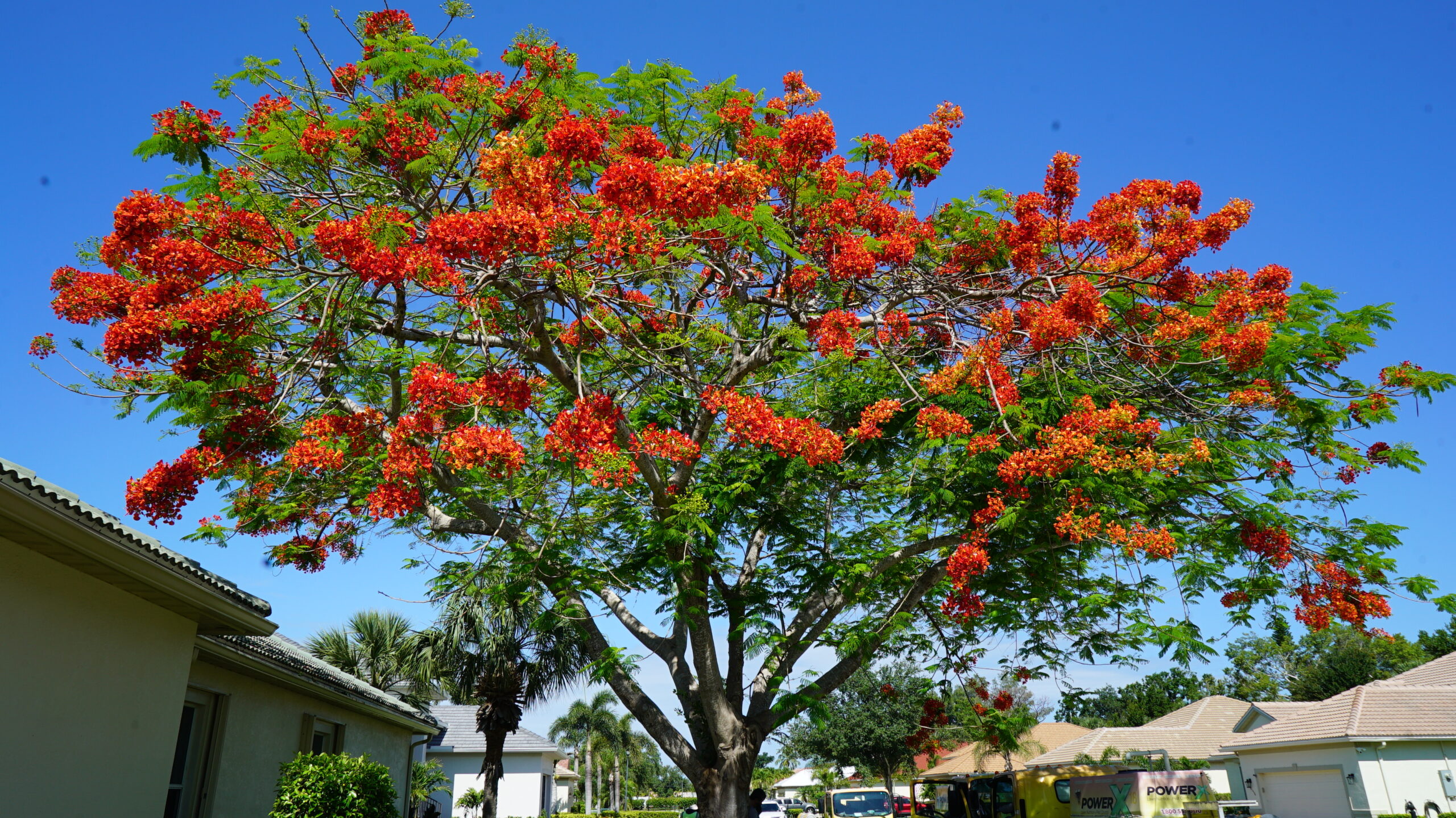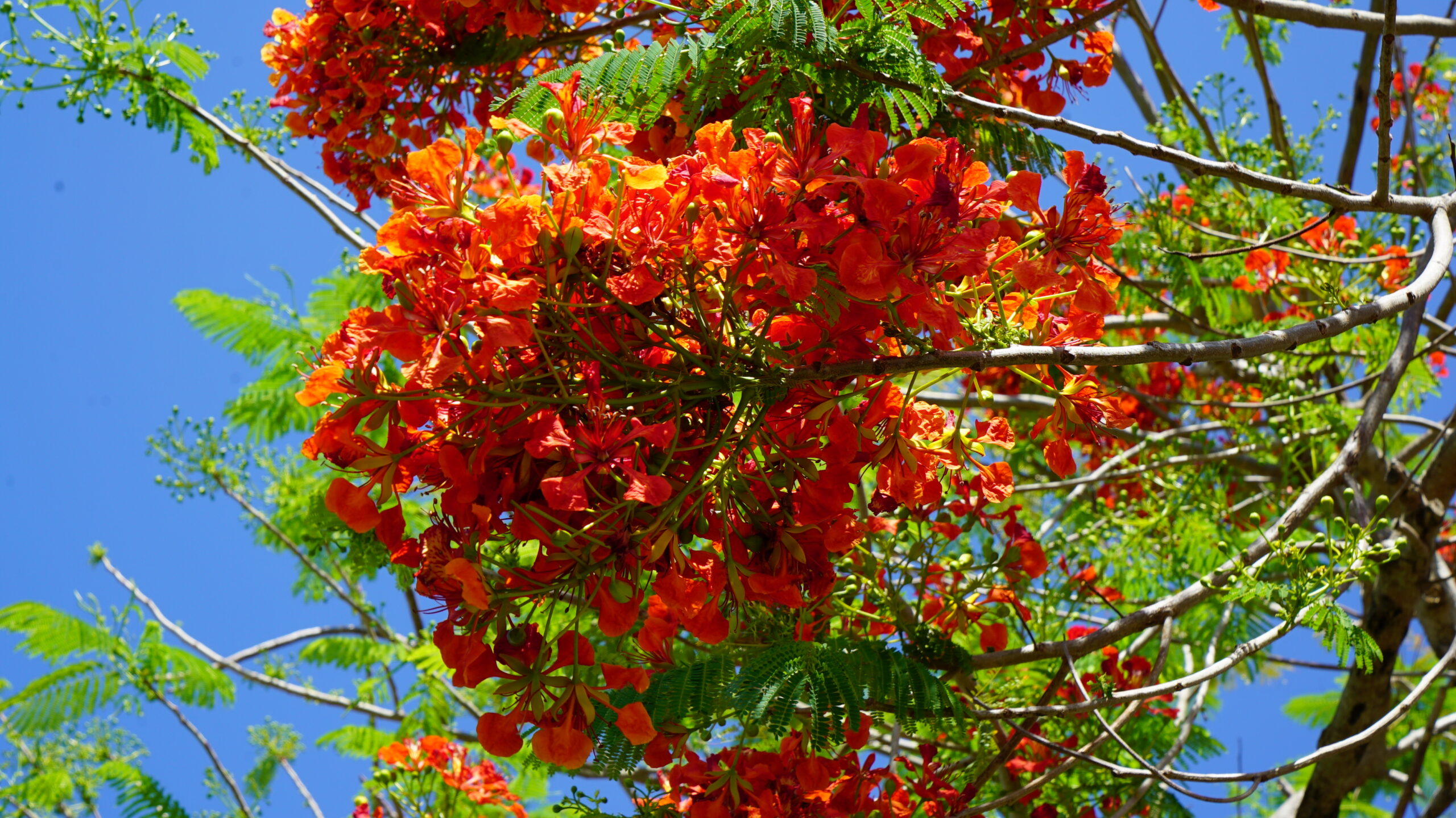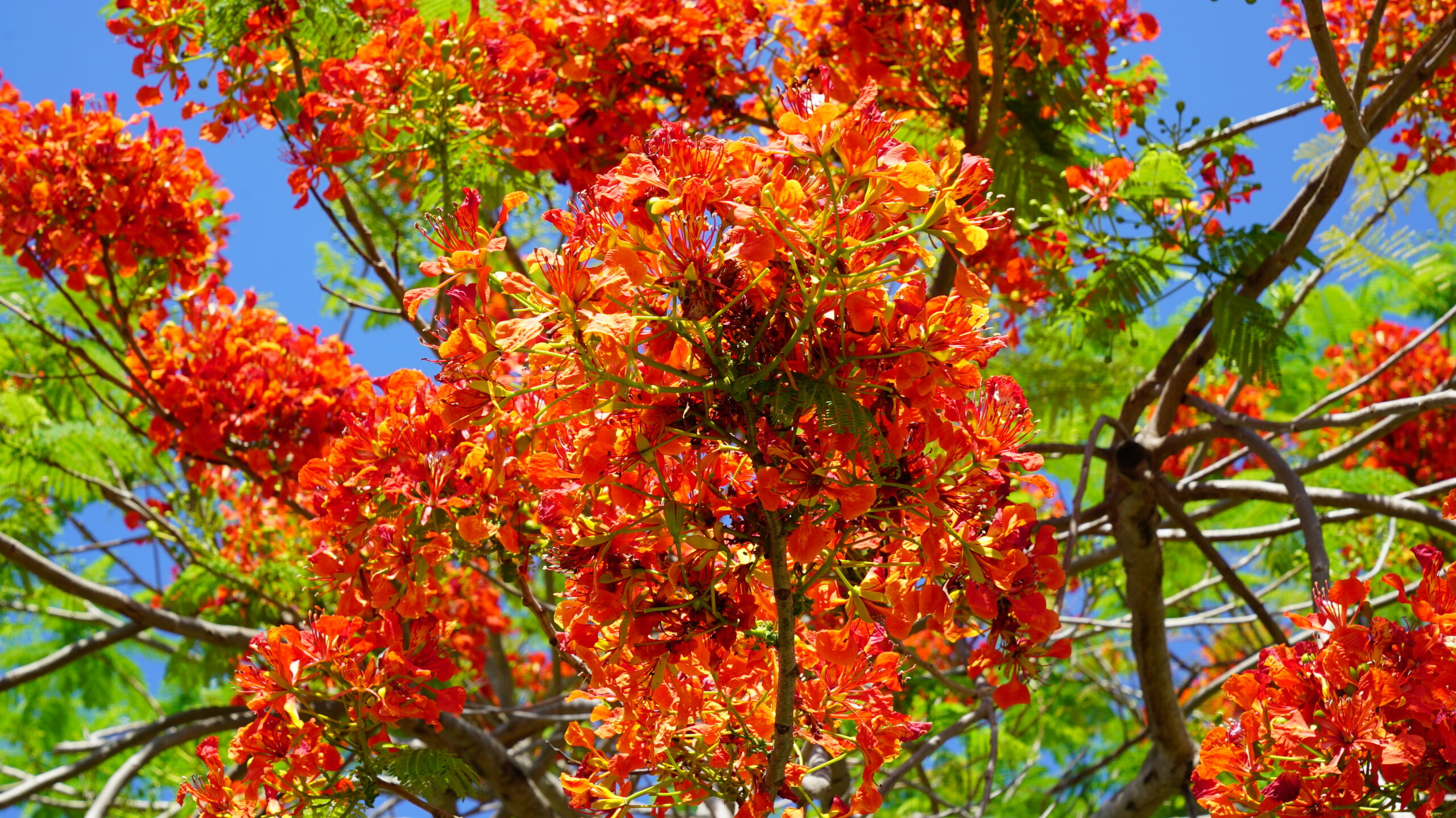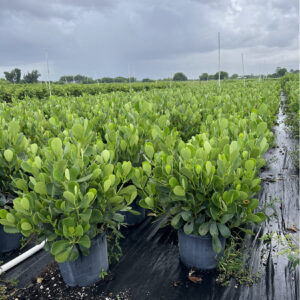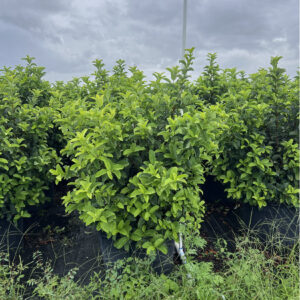Royal Poinciana
The Royal Poinciana (Delonix regia) is a fast-growing tropical tree, reaching 30 to 40 feet in height with a broad canopy spread of 40 to 60 feet. It features brilliant red to orange-red flowers, bright green, fern-like leaves, and smooth greyish-brown bark. Thriving in USDA Zones 10-12, it prefers full sun and well-draining soil with regular watering. Ideal for large gardens, parks, and street planting, it provides ample shade and a stunning floral display. Generally low-maintenance and non-toxic, the Royal Poinciana is a spectacular addition to warm-climate landscapes.
$1,086.54
Related products
-
All Products
Clusia
$61.25 – $262.50 This product has multiple variants. The options may be chosen on the product page -
All Products
Viburnum Odoratissimum
$15.32 – $262.50 This product has multiple variants. The options may be chosen on the product page
Royal Poinciana (Delonix regia)
Color:
Leaves: Bright green, fern-like, bipinnate leaves.
Flowers: Brilliant red to orange-red, large and showy, blooming in clusters.
Trunk: Smooth, greyish-brown bark.
Fruit: Long, flat seed pods, dark brown when mature.
Climate:
Prefers tropical and subtropical climates.
Ideal temperatures are between 75°F and 85°F (24°C – 29°C).
Sensitive to frost and prolonged cold temperatures.
Size:
Typically grows to about 30 to 40 feet (9 to 12 meters) in height.
Spread can be around 40 to 60 feet (12 to 18 meters), forming a broad, umbrella-like canopy.
Care:
Light: Prefers full sun for optimal growth and flowering.
Water: Requires regular watering during the growing season. Once established, it can tolerate some drought but prefers consistent moisture.
Soil: Thrives in well-draining soil, slightly acidic to neutral pH.
Fertilizer: Use a balanced fertilizer during the growing season to support growth and flowering.
Pruning: Prune to maintain shape and remove any dead or damaged branches. Best done after flowering.
Zone:
USDA Hardiness Zones 10-12.
Landscaping:
Ideal for large gardens, parks, and as a street tree due to its broad canopy and showy flowers.
Works well as a specimen tree or in large lawns where it can provide ample shade.
Not recommended for small gardens due to its large size and extensive root system.
Additional Info:
Propagation: Typically propagated from seeds, which can be soaked in water overnight to aid germination. Cuttings can also be used.
Pests/Diseases: Generally pest-resistant but can occasionally suffer from root rot if overwatered. Proper care and monitoring can prevent most issues.
Growth Rate: Fast-growing, reaching mature height in a few years under ideal conditions.
Toxicity: Non-toxic to pets and humans, making it a safe choice for residential areas.
Interesting Fact:
The Royal Poinciana, also known as the Flamboyant Tree or Flame Tree, is native to Madagascar. It is celebrated for its spectacular, fiery blossoms that create a stunning display in late spring to early summer, often before the leaves fully emerge.
| Size | 25 Gallon |
|---|

